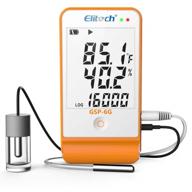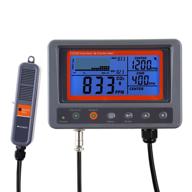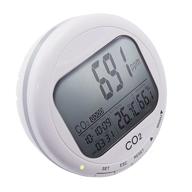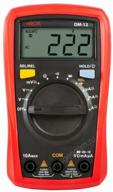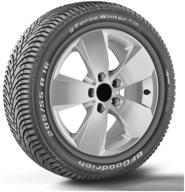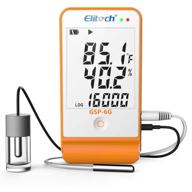Top products in 📈 Recorders & Data Acquisition
Types of Recorders and Data Acquisition Devices
Recorders and data acquisition devices are used to monitor, store, analyze and report on real-world physical conditions and events. There are several main types of recorders and data acquisition systems commonly used across various industries:
Another interesting products
Data Loggers
Data loggers are self-contained measurement devices that autonomously record data over time. They contain sensors, memory for data storage, and a processor. Data loggers are available for measuring temperature, humidity, pressure, voltage, current, and other parameters. They can operate for long periods, capturing data at set intervals. Data is later transferred to a computer via USB, wireless, or Ethernet. Benefits include low cost and simple setup/operation. Data loggers are used for environmental monitoring, machine condition monitoring, and other applications.
Chart Recorders
Chart recorders are graphic recorders that continuously plot data on a paper chart or roll. As the chart paper moves across a drum, pens mark lines and curves proportional to the measurements. Models are available for 1, 2, 4 or more pens for multi-channel recording. Key benefits of chart recorders are the real-time analog trace and hard copy record. They do not rely on power to retain data. Disadvantages are limited recording duration and physical media. Chart recorders see declining usage but remain important for some applications such as medical equipment.
Paperless Recorders
Paperless recorders are the modern alternative to chart recorders, using a digital display rather than physical media. Measurements are stored electronically and shown on the built-in LCD screen. Data can also be viewed remotely via software. Models with touchscreen interfaces provide easy configuration and interaction. Benefits include compact design, long recording times, remote monitoring/control, and environmental savings from lack of paper. Paperless recorders are widely used for industrial process monitoring, HVAC systems, and other applications needing a local visual record.
Data Acquisition Systems
Data acquisition (DAQ) systems are robust measurement devices with advanced capabilities beyond basic data logging and recording. DAQ hardware has multiple analog and digital inputs for connecting sensors. It can aggregate data from multiple points simultaneously with fast sampling rates. Sophisticated DAQ systems have signal conditioning to process raw signals. They convert analog signals to digital data for computer analysis and reporting. DAQ systems are highly flexible for demanding test situations like product design validation, manufacturing quality control, and scientific studies.
Similar products
Applications
Here are some examples of real-world applications for the various types of recorders and data acquisition devices:
- Data loggers for tracking temperatures in a warehouse environment
- Chart recorders for hospital patient vitals and equipment sensors
- Paperless recorders for monitoring HVAC performance in office buildings
- DAQ systems for automotive engine testing and emission development
In summary, recorders and DAQ equipment serve important roles in measurement and monitoring across industries. The right solution depends on factors such as number of sensors, speed and precision needs, data analysis requirements, and operating conditions.
Paperless Recorders
Paperless recorders are electronic devices used to monitor and record measurement data, without the use of chart paper or other physical media. They are the modern successors to traditional chart recorders.
Key Features
- LCD screen displays real-time data graphs and values
- Touchscreen interface for configuration and control
- Multiple analog input channels
- High sampling rates up to 100+ samples per second
- Data recording to internal memory or external storage
- Communication capabilities such as Ethernet, USB, WiFi
- Programmable alarms and email/text notifications
- Software for data visualization and analysis
Benefits
Paperless recorders offer important advantages over old pen-and-paper chart recorders:
- Compact size for portability and small footprint
- No consumables needed - eliminates purchasing and storing paper
- Virtually unlimited recording capacity to internal and external memory
- Real-time remote data monitoring via web browsers
- Enhanced functionality like programmable math channels, data logging, and custom screens
- Eco-friendly - reduces paper waste and ink chemicals
Applications
Paperless recorders are well-suited for applications that need:
- Local visual display of process trends and data
- High channel density in a small form factor
- Unattended remote monitoring capability
- Frequent data downloads for analyis rather than permanent records
Example applications:
- Industrial process monitoring
- HVAC system performance monitoring
- Medical equipment sensors
- Environmental chamber mapping
- Energy auditing
Leading Manufacturers
Top manufacturers of paperless recorders include Yokogawa, AMETEK, ABB, Honeywell, Graphtec, Siemens, and OMEGA Engineering. Models range from 2-channel strip chart recorders to systems with dozens of inputs for process plant monitoring.
In summary, paperless recorders utilize digital electronics and display technology to achieve greater flexibility and functionality than traditional chart recorders, for a wide variety of measurement and data acquisition applications.
Data Acquisition Systems
Data acquisition (DAQ) systems are measurement devices used to collect, measure, and analyze data from sensors, instruments, and signals from the physical world. They bridge physical phenomena and the digital world of computers.
Key Components
A DAQ system consists of:
- DAQ hardware device with analog and digital inputs
- Sensors and transducers for measuring parameters
- Signal conditioning to handle unwanted signal modification
- Analog-to-digital conversion for processing by computer
- Driver software and programming interfaces
- Application software for control, visualization, logging, and analysis
Capabilities
Modern DAQ systems offer:
- High-speed sampling up to 1 million samples per second
- High-resolution analog inputs up to 24-bit resolution
- Multiple synchronized analog and digital channels
- Connectivity for wireless, USB, Ethernet, etc.
- Small, rugged form factors including USB and PXI
- Real-time signal analysis and processing
- Flexibility through modular sensor input and software-configurable functionality
Applications
DAQ systems support many applications including:
- Laboratory testing and measurement
- Industrial process monitoring
- Machine condition monitoring and predictive maintenance
- Manufacturing quality control and testing
- Automotive design, testing, and validation
- Aerospace system development and qualification
Benefits
DAQ systems provide:
- High accuracy and precision
- Fast sampling rates to catch signal details
- Time synchronization of multiple measurements
- Flexibility to adapt to varying application needs
- Enhanced productivity through automated testing
- Improved data-driven decision making
In summary, DAQ hardware and software provide the interface between physical sensors and signals, and actionable data for computers and applications.
Key Features to Consider for Recorders and Data Acquisition
Selecting the right recorder or data acquisition (DAQ) system for an application depends on several key features and specifications.
Measurement Accuracy
How precisely must the device measure and record the signal or parameter? Accuracy is expressed in terms of error or percentage of full scale reading. High-end DAQ systems offer greater accuracy than simple data loggers.
Sampling Rate
Sampling rate, expressed in samples per second (S/s), determines how often the device acquires data points. High sampling rates are needed to capture fast phenomena. DAQ systems support faster maximum rates than recorders.
Number of Channels
More channels allow simultaneous acquisition of multiple parameters from different sensors. Data loggers may have just 1-2 channels, while advanced DAQ systems support hundreds of channels.
Data Storage and Retrieval
Consider recording duration needed and how data will be transferred to other systems for analysis, reporting, and storage. Options include removable media, wired/wireless networking, cloud storage.
Software and Connectivity
Software features like configuration, real-time views, alarming, and data visualization are important. Wired and wireless connectivity such as USB, Bluetooth, WiFi enable integration and remote access.
Ruggedness and Portability
Harsh environments and field use require rugged, compact devices. But portability may not be required for permanent installations.
Cost
Basic data loggers can be under $100 while advanced systems are over $1000. Consider long-term costs like software licenses, training, maintenance.
Choosing the optimal features requires understanding the application requirements and operating conditions. Over-speccing capabilities can inflate costs, while under-speccing can compromise performance. Evaluating leading options from reputable suppliers will lead to the best selection.
Data Storage and Retrieval for Recorders and Data Acquisition
A key consideration for recorders and data acquisition (DAQ) systems is how the measured data will be stored and accessed for retrieval and analysis.
Internal Memory
Many data loggers and recorders have internal memory ranging from several megabytes up to gigabytes to store measurement data. Capacity depends on sampling rates and duration. Benefits include simple operation and no external media to manage. But data is inaccessible until downloaded.
Removable Media
Options like SD cards or USB flash drives allow local storage of massive amounts of recorded data. For example, a 32 GB SD card could store over 10 years of 1 Hz temperature data. Media is portable for data transfer to other systems.
Cloud Storage
For networked DAQ systems, cloud storage provides flexible, scalable, remote capacity. Cloud access enables global data sharing and backups. Must consider requirements like data bandwidth, security policies, and access costs.
Wired Connections
Ethernet, USB, RS-232, RS-485, and other cabling allows for data streaming to databases and applications. High-speed transfers support real-time analytics. But requires infrastructure and lacks mobility.
Wireless Transmission
Technologies like WiFi, cellular, and Bluetooth enable untethered data transfers for remote monitoring and access. Useful for portable or distributed systems. Security and bandwidth limitations may apply.
Data Formats
Common formats for recorded measurements include CSV for analysis in spreadsheets and databases, .MAT for MATLAB, binary formats for smaller size, and vendor-specific types. The format impacts storage needs and software compatibility.
In summary, matching data storage capabilities to the application is vital for reliability, performance, analytics, and more. The right solution depends on accessibility needs, collection speed and duration, infrastructure constraints, and budget.
Software and Connectivity for Recorders and Data Acquisition
Software and connectivity are critical considerations when selecting and implementing recorders and data acquisition (DAQ) systems.
Software
Software includes:
- Drivers to enable computer connectivity and control
- APIs for custom programming and integration
- Configuration utilities for setup and management
- Data visualization for real-time charting and dashboards
- Data storage and export tools
- Analysis software for statistics, report generation, and more
Advanced software functionality can enhance productivity, but increases complexity. Optimize software capabilities to application needs.
Connectivity
Connectivity allows data transfers and remote access to recorders and DAQ systems. Options include:
- USB for direct PC connections
- Ethernet networking for wired LAN/WAN data transfers and web access
- WiFi wireless networking for convenient portable use
- Bluetooth for short-range wireless between devices
- Cellular for remote locations without wired infrastructure
Consider bandwidth, security, and costs when selecting connectivity. Wireless options enable flexibility but may have limitations like slower speeds or data usage fees.
Key Considerations
- Will software need to integrate with existing enterprise systems?
- Is a real-time dashboard view needed, or just periodic data downloads?
- Can IT support and manage the system and infrastructure?
- Does the solution support evolving needs for edge computing and analytics?
Getting software and connectivity right is crucial to leveraging recorders and DAQ for impactful data collection and insights.
Applications and Industries for Recorders and Data Acquisition
Recorders and data acquisition (DAQ) systems find widespread use across many industries and applications.
Scientific Research
- Laboratory testing and measurement equipment
- Field research studies like meteorology, seismology, ecology
- Space exploration sensor platforms like spacecraft and satellites
- Physics and engineering experimentation
Research relies on high-accuracy DAQ systems to quantify study parameters under strict protocols and methodology.
Industrial Process Monitoring
- Chemical processing and refineries
- Pharmaceutical and biotechnology manufacturing
- Food production and agriculture
- Water treatment and distribution
Process industries utilize recorders and paperless chart recorders to track key performance metrics and identify optimization opportunities.
Automotive Testing
- Engine and emissions development
- Crash testing
- Noise, vibration and harshness (NVH) analysis
- Vehicle dynamics and performance
Automotive engineering heavily leverages DAQ systems and customized sensors to simulate conditions and accelerate product design.
Manufacturing and Product Development
- Quality assurance testing
- Inspection systems
- Machine monitoring
- Reliability and durability profiling
Robust, synchronized DAQ networks enable automated factory processes and data-driven manufacturing.
In summary, recorders and DAQ tools serve vital roles across many sectors, from academia to heavy industry. The key is selecting fit-for-purpose solutions to match technical needs and operating environments.
How Amazon Prime Benefits Buyers of Recorders & Data Acquisition Equipment
For engineers, researchers, and technical professionals who regularly purchase recorders, data acquisition systems, and related test and measurement equipment, an Amazon Prime membership can provide significant benefits and convenience.
Here are some of the key advantages Amazon Prime offers for frequent buyers in the recorders and DAQ market segment:
Free Two-Day Shipping
Prime members get free two-day shipping on millions of items, including expensive DAQ hardware and accessories. This allows faster receipt of orders to get systems up and running for projects with tight deadlines. Overnight and same-day delivery options are also available for an additional fee in many areas.
Easy Returns
Amazon offers hassle-free returns within 30 days on most products. This is beneficial for evaluating different recorders or DAQ models side-by-side before deciding on the right solution. Prime members can print free return labels for an easy process.
Access to Deals
Prime members get exclusive access to special deals and discounts. This includes Lightning Deals and Prime Day events with major sales on recording devices and test equipment from top brands.
Streaming Entertainment
Amazon Prime includes access to Prime Video, Prime Music, and more. Engineers can take a break from intensive data recording and analysis work to stream movies, TV shows, music and other content.
Overall, the combination of benefits like fast free shipping, easy returns, special deals, and media streaming make Amazon Prime a very useful membership for professionals who regularly purchase recorders, DAQ hardware, sensors, and related lab equipment.
Data Acquisition Tools
Data acquisition tools are essential for collecting and analyzing data in various fields. Here are some of the most popular data acquisition tools:
- WINDAQ Software
- ActiveX
- DATAQ
- FlukeCal
- VTI INSTRUMENTS
- MSTARLABS
- DAQami
- DASYLab data acquisition
(Source: )
- Data Acquisition Toolbox by MATLAB
- Signal Processing Toolbox
- NI-DAQmx devices
- Measurement Computing and Data Translation DAQ devices
(Source: )
- EnCase Forensic
- DriveSpy
- ProDiscover Forensics
- Recovery for Windows
(Source: )
- DAQ hardware
- Sensors
- Actuators
- Signal conditioning gear
- Computer running DAQ software
(Source: )
- DATAQ Instruments
- National Instruments
(Source: )
These tools vary in their features, benefits, and costs, and can be used for different applications and budgets. It is important to choose the right data acquisition tool for your specific needs to ensure accurate and efficient data collection and analysis.
What Are The Different Types Of Data Acquisition Tools??
Data acquisition tools are used to collect and analyze data in various fields. Here are the different types of data acquisition tools:
- Digital data acquisition systems: These are available in a variety of form factors, speed, sample rate ranges, signal input types, and many other criteria. They cover a broad range of measurement applications or acquiring and sampling electrical signals, from general-purpose to very specific. Examples include data loggers, data recorders, signal conditioners, oscilloscopes, spectrum analyzers, and vibration analyzers.
- Stand-alone data acquisition systems: These are portable data acquisition systems with a built-in computer. They are ideal for field applications where a computer is not available.
- Rack-mounting data acquisition systems: These are designed to be mounted in a standard 19-inch equipment rack. They are commonly used in laboratory and industrial applications.
- Computer-connected data acquisition modules: These are small, low-cost modules that connect to a computer via USB, Ethernet, or other interfaces. They are ideal for low-channel-count applications.
- Analog data acquisition systems: These are used to acquire analog signals, which are obtained from the direct measurement of electrical quantities such as DC & AC voltages, DC & AC currents, resistance, and more. Examples include graphic recording instruments and magnetic tape instrumentation.
- Digital data acquisition systems: These are used to acquire digital signals and use digital components for storing or displaying the information. Examples include analog to digital converters, display devices, and digital recorders.
- Data acquisition software: These are software tools used for building large-scale data acquisition systems. Examples include EPICS, WinDaq, and LabVIEW.
- Calibration services: These are services aimed at detecting the inaccuracy and uncertainty of a measuring instrument or piece of equipment.
These different types of data acquisition tools vary in their features, benefits, and costs, and can be used for different applications and budgets. It is important to choose the right data acquisition tool for your specific needs to ensure accurate and efficient data collection and analysis.






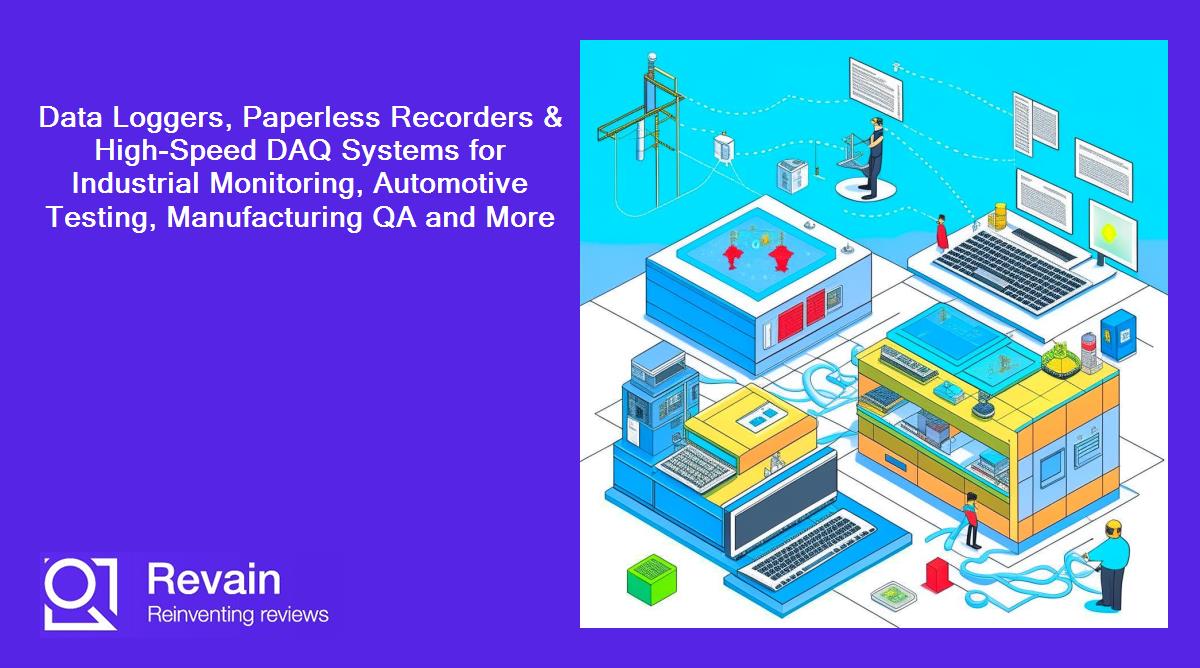
![🌡️ [iso 17025 certified] elitech rc-5 usb digital data logger - 10 pack temperature recorder for vaccines and ddl logo](https://images.revain.org/blob/revain_storager5ljeayx_6b206ac695@128x128.jpg)

